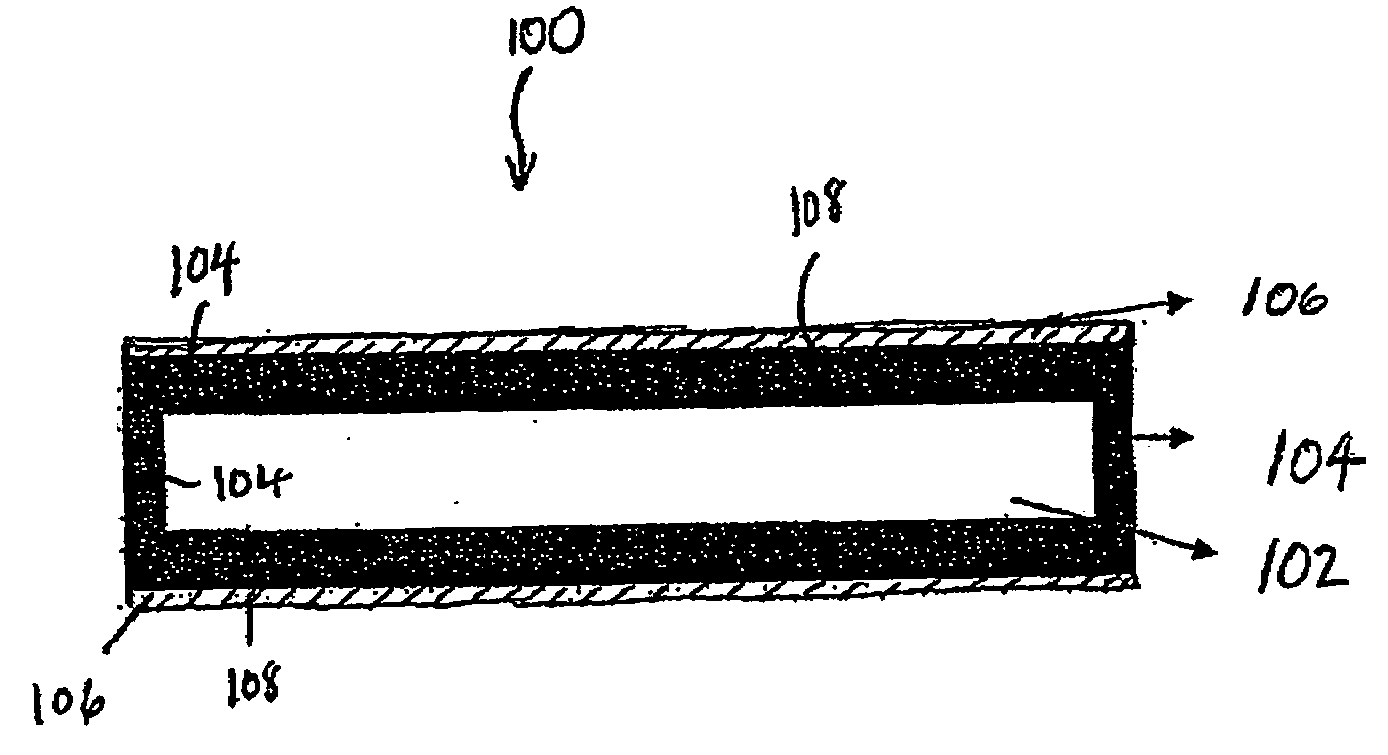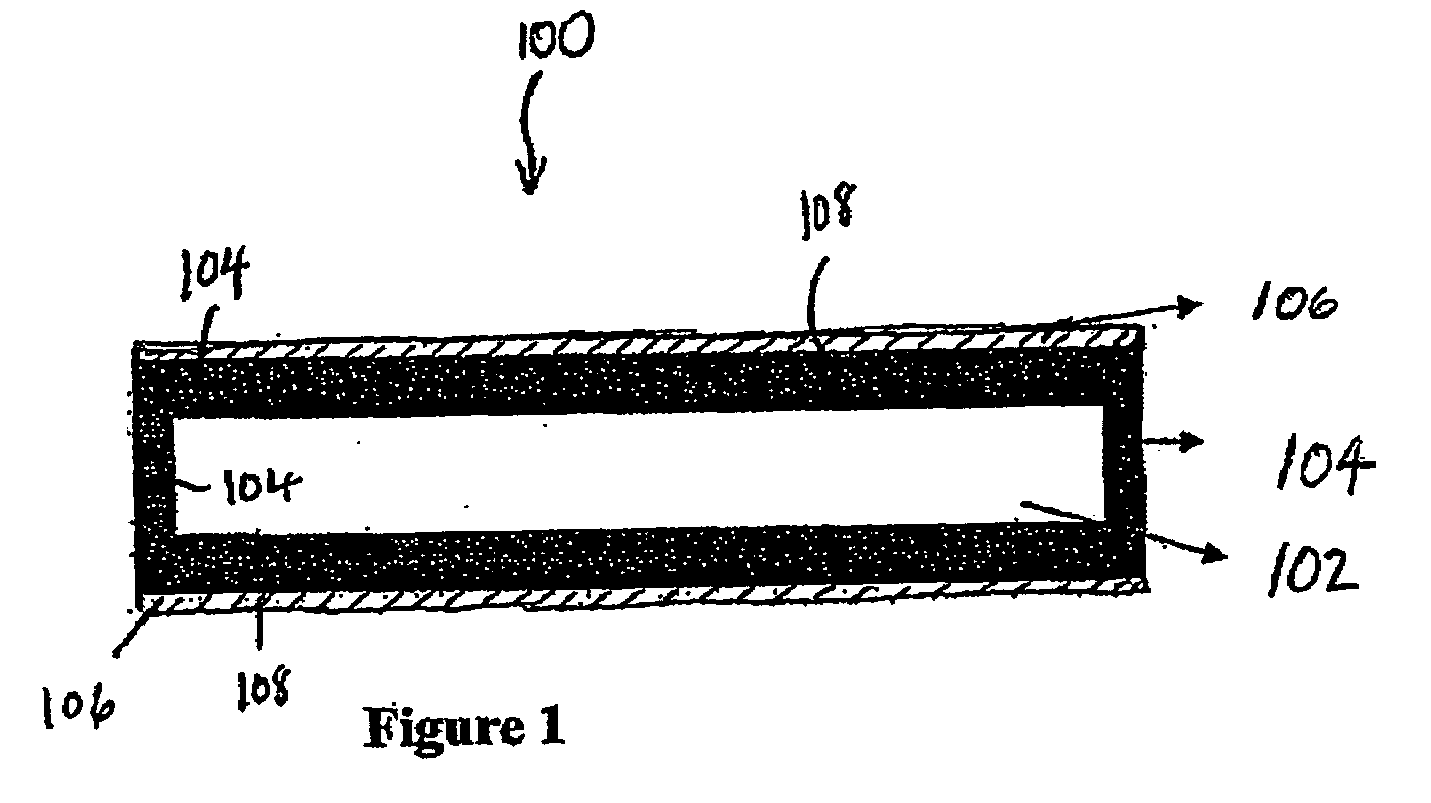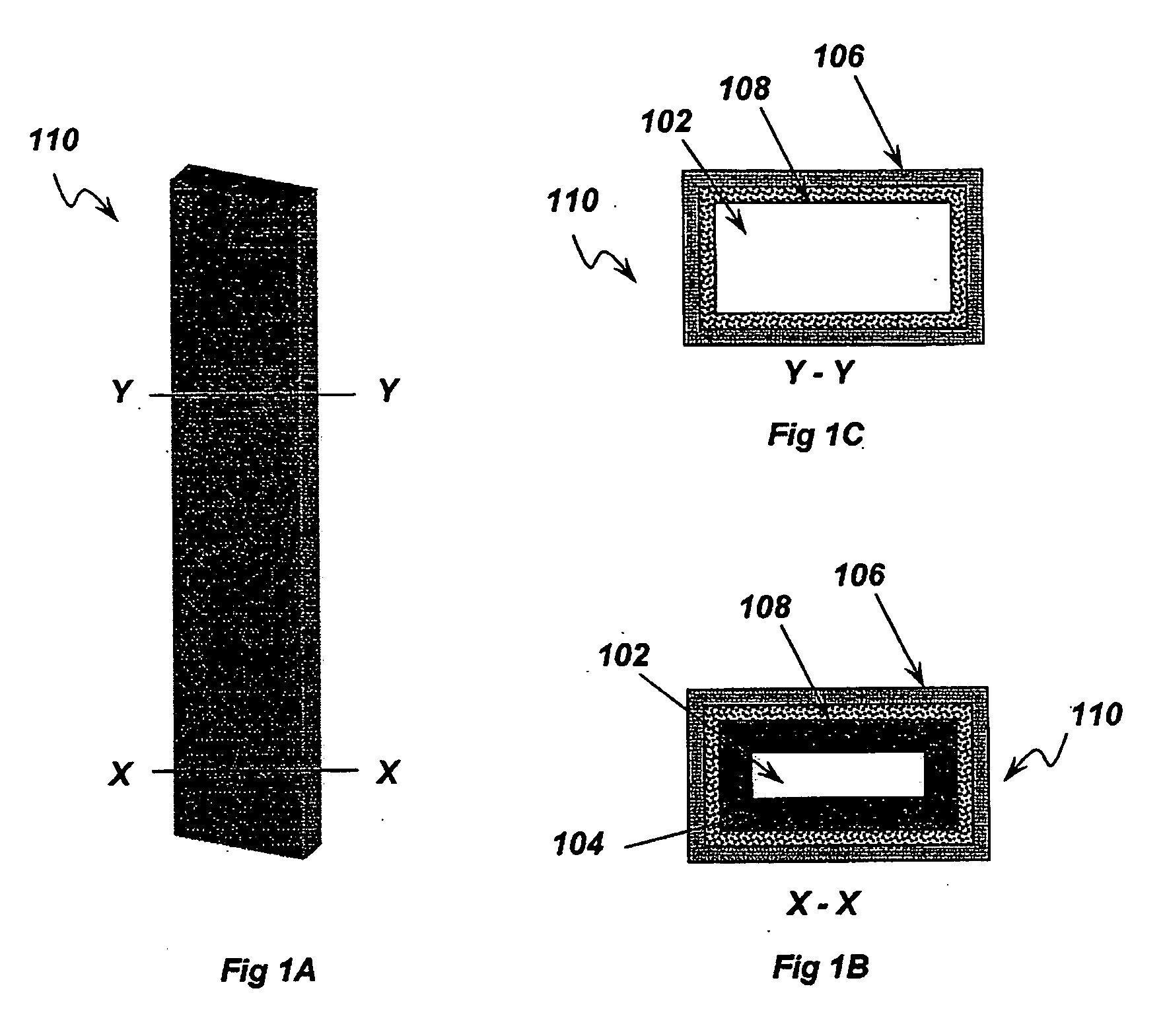Engineered composite building materials and methods of making same
a technology of composite building materials and building materials, applied in the field of composite building materials, can solve the problems of affecting the integrity and adhesion of the substrate, the inability of conventional concrete sealers to work well with cementitious, gypsum, other inorganic composite materials containing cellulose, glass, steel or polymeric fibers, etc., to achieve the effect of improving adhesion, improving moisture absorption characteristics, and improving physical and chemical properties
- Summary
- Abstract
- Description
- Claims
- Application Information
AI Technical Summary
Benefits of technology
Problems solved by technology
Method used
Image
Examples
example 1
[0050]Effect on water absorption. Fiber cement specimens (10 mm×25 mm×25 mm) were made in accordance with the following formulation: about 35% by weight of Portland Cement, about 57% by weight of aggregate silica, and about 8% by weight of cellulose fibers and using methods described in U.S. Pat. No. 6,676,744 which is hereby incorporated by reference in its entirety for all purposes. The fiber cement specimens were dried in oven at a temperature of about 105° C. for 15 minutes. Each of the dried fiber cement specimens was weighed before impregnation. Each fiber cement specimen was subsequently immersed in an impregnating agent specified in Table 2 for 10 minutes at 72° F.+2° F. under atmospheric pressure. Paper towels were used to remove the excess impregnating agents from the surface of the specimens after impregnation. The impregnated fiber cement specimens were weighed. The impregnation loading was calculated based on the following formula:
Impregnationloading=Weightafterimpregna...
example 2
[0052]Paint adhesion after freeze thaw cycling. A fiber cement specimen prepared using the same materials and processes as in Example 1 was coated with Rubinate 9513 to achieve a wet film thickness of about 0.002 inches and allowed to penetrate into the surface for 10 minutes to form durable bonds within the pores of the fiber cement substrate. A penetration depth of about 150 to 350 microns was observed upon examining a cross section of the sample, as shown in the photograph of FIG. 3. Paint adhesion was tested and the sample was subjected to freeze thaw testing according to Japanese Industrial Standard JIS 1435-1991 and survived up to 320 freeze / thaw cycles without showing signs of paint peel failure as shown in Table 3 below:
TABLE 3Number of Freeze / thaw cycles% Paint peel failure001503200
example 3
[0053]Bending Stiffness Retention. A fiber cement specimen prepared using the same materials and processes as Example 1 was evaluated for modulus of elasticity (MOE) as a function of freeze / thaw cycles. As Illustrated in FIG. 4, the sample formed using a isocyanate impregnating agent retained at least 50% of its original bending stiffness modulus after 250 freeze thaw cycles while the untreated material lost more than 50% of its original bending stiffness after only 50 cycles.
PUM
| Property | Measurement | Unit |
|---|---|---|
| Temperature | aaaaa | aaaaa |
| Thickness | aaaaa | aaaaa |
| Thickness | aaaaa | aaaaa |
Abstract
Description
Claims
Application Information
 Login to View More
Login to View More - R&D
- Intellectual Property
- Life Sciences
- Materials
- Tech Scout
- Unparalleled Data Quality
- Higher Quality Content
- 60% Fewer Hallucinations
Browse by: Latest US Patents, China's latest patents, Technical Efficacy Thesaurus, Application Domain, Technology Topic, Popular Technical Reports.
© 2025 PatSnap. All rights reserved.Legal|Privacy policy|Modern Slavery Act Transparency Statement|Sitemap|About US| Contact US: help@patsnap.com



